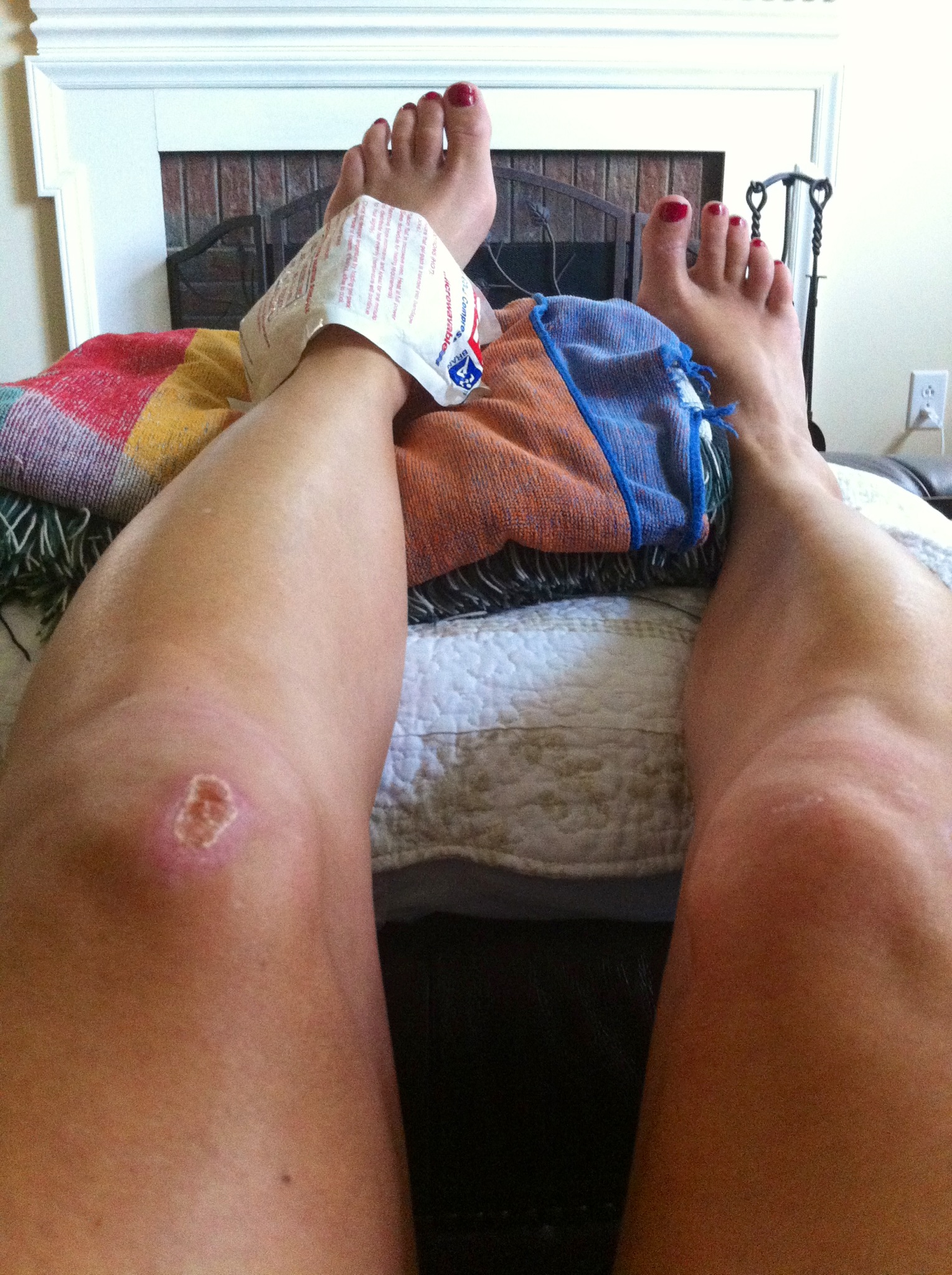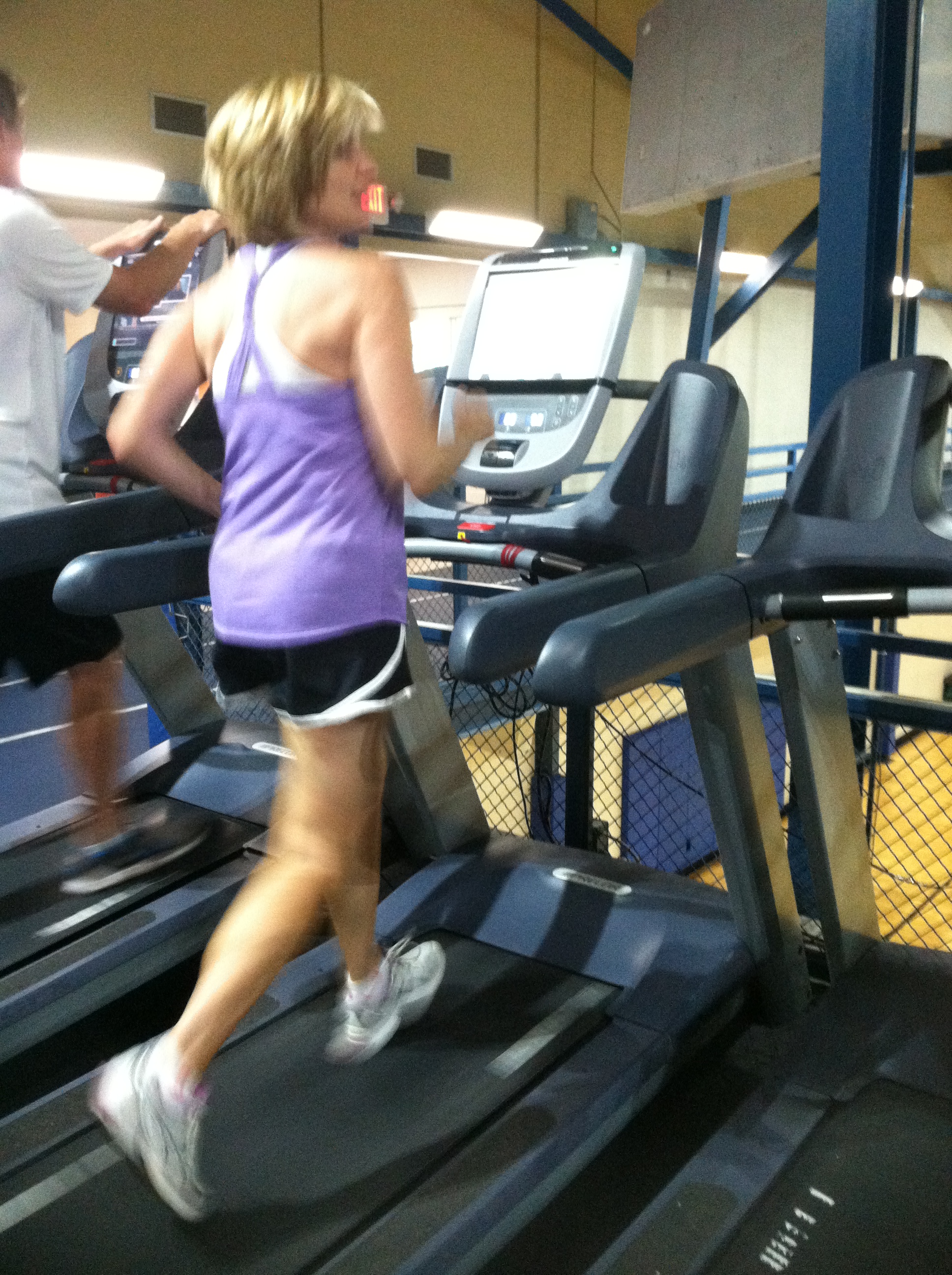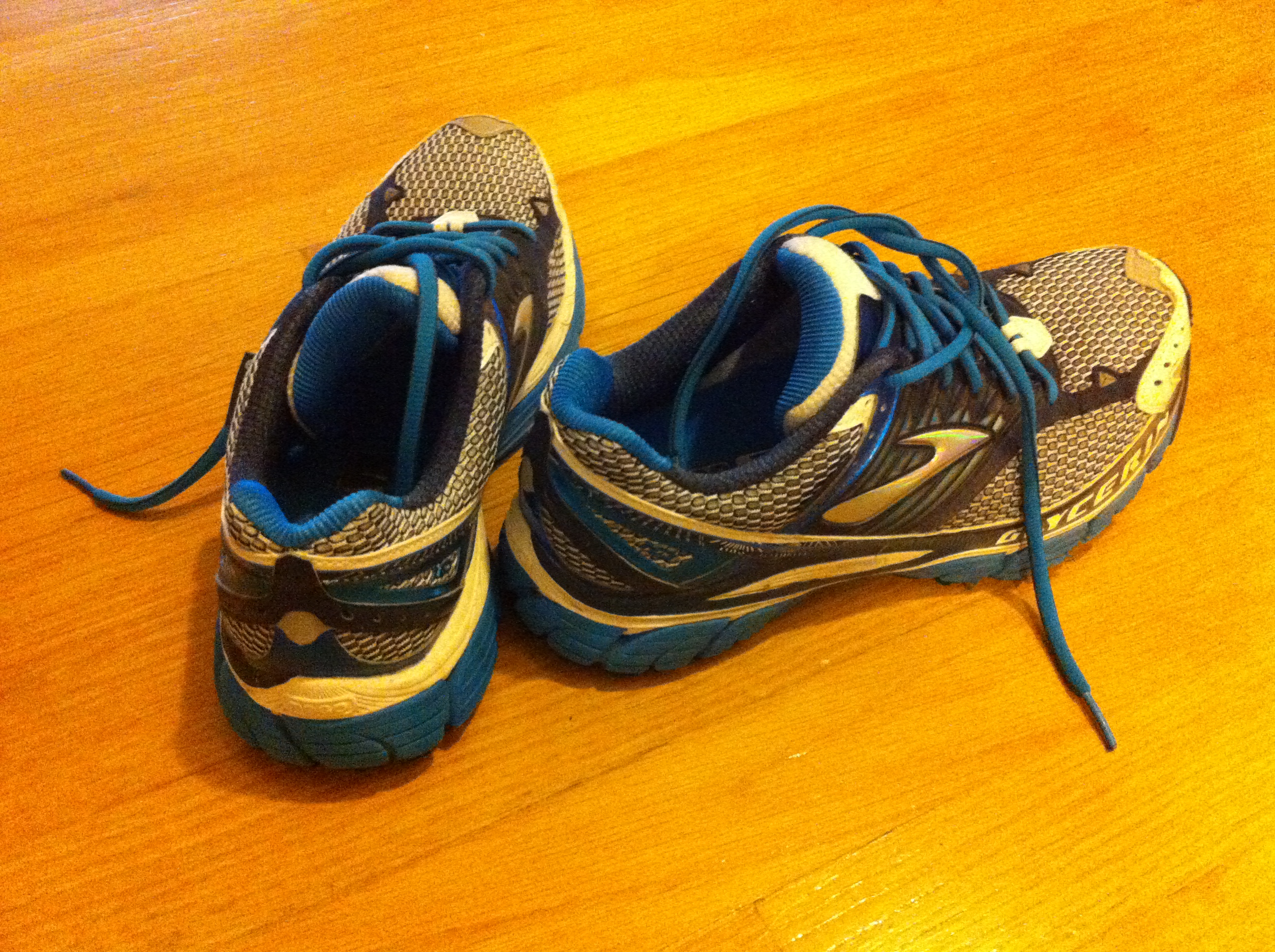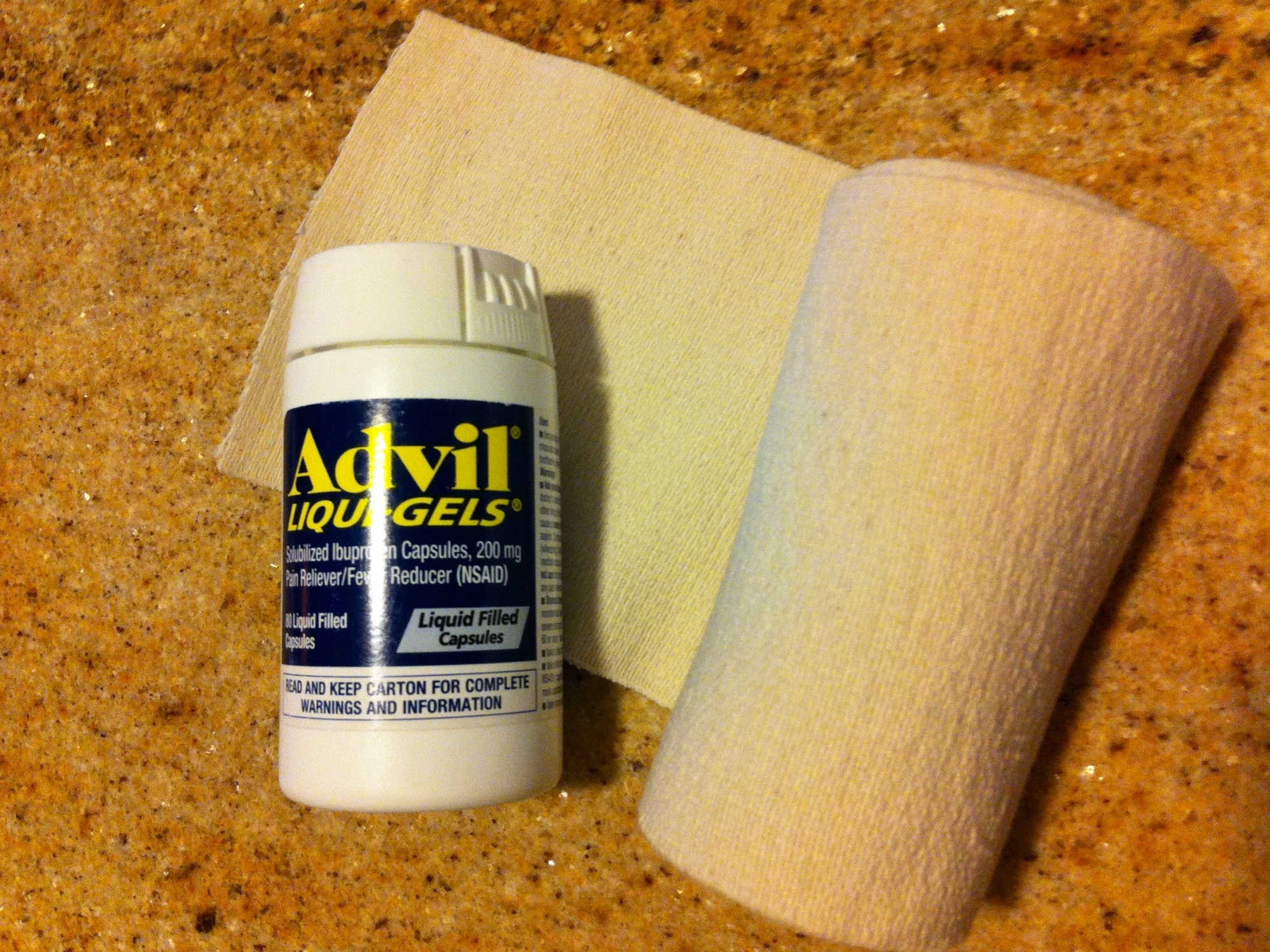 Because the ligaments in my ankles are like old rubber bands, I guess it’s only fitting that I twisted my ankle – again – during an activity that has nothing to do with running or sports. A couple of weeks ago, I sprained my right ankle running after dark, with a blindfold over my eyes (the ugly scab on my left knee in the photo is a souvenir from that fall). Today, I sprained my other ankle trimming my roses. I wore Adidas sandals down to the mailbox; I guess this means that I need to break out my ankle braces for gardening from now on.
Because the ligaments in my ankles are like old rubber bands, I guess it’s only fitting that I twisted my ankle – again – during an activity that has nothing to do with running or sports. A couple of weeks ago, I sprained my right ankle running after dark, with a blindfold over my eyes (the ugly scab on my left knee in the photo is a souvenir from that fall). Today, I sprained my other ankle trimming my roses. I wore Adidas sandals down to the mailbox; I guess this means that I need to break out my ankle braces for gardening from now on.
My ankles (both of them) will be okay, like they always are. I’ll ditch running for the time being, like I did this afternoon, and the swelling will subside. The “nice” thing about having ankles like mine is that I don’t have much left to injure, so my recovery time is better than most. As for my long-term health, I try not to think about it too often.
I wouldn’t be in this position if not for a three-month period during my senior year of high school in the spring of 2000. That February, I sprained both of my ankles during preseason practice with my school’s soccer team. I should have taken time off from playing; instead, I went to the athletic training room every day at 2:30 for an ice bath and a double-layer tape job with athletic tape and moleskin, which went under orthopedic braces. I played in every practice and every game that season; once, I went to school on crutches, then took two ibuprofens, went to the trainer for my tape job and played all 100 minutes in a double-overtime win over our arch-rival.
It sounds crazy, but for an 18-year-old with a dream of playing at the next level, it made perfect sense at the time. And that spring, despite my injuries, I had more fun on the field than I’d ever had in all my years of playing soccer. I played with my best friends, the underclassmen looked up to me, and my coach saw enough in me to risk my long-term health for the good of the team. At least, that’s how I looked at it.
This isn’t a blog about soccer, and it isn’t a blog about my senior year of high school. But whenever I remember those days now, I think about how my sister, Taylor, has been robbed of similar experiences. Not the ankle injuries – I’ll keep those for her sake – but finding something she loves so much that she’d play through pain to avoid missing out on a single moment; end-of-season pizza parties and team sleepovers and out-of-town tournaments and long bus rides back from state playoff games; the joy of winning, the heartbreak of losing and the indescribable feeling of being part of something bigger than yourself.
That’s why I won’t let anything stop me from running for Taylor at Thunder Road. If my ankles don’t shape up, I may have to crawl. Without my vision, I may record the worst half marathon time of my life. But on Saturday, Nov. 16, I’m crossing that finish line blindfolded for my sister. I’ll never drop out of this race, and I’ll never stop fighting Batten disease for her.
I will run the Thunder Road Half Marathon blindfolded to support gene therapy co-funded by Taylor’s Tale at the University of North Carolina Gene Therapy Center. Donations to this cause are 100 percent tax-deductible. To support my run and our fight to develop treatments for Batten disease and other genetic diseases, click here.
Join the Taylor’s Tale team at Thunder Road! Click here to register for the marathon, half marathon or 5K. On the second page of registration, under “Event Groups/Teams,” select “Taylor’s Tale” from the list under “Choose an Existing Group.” Run for us to help raise awareness on race day. Stay tuned for more details, including special shirts for team members and an informal post-race event!



